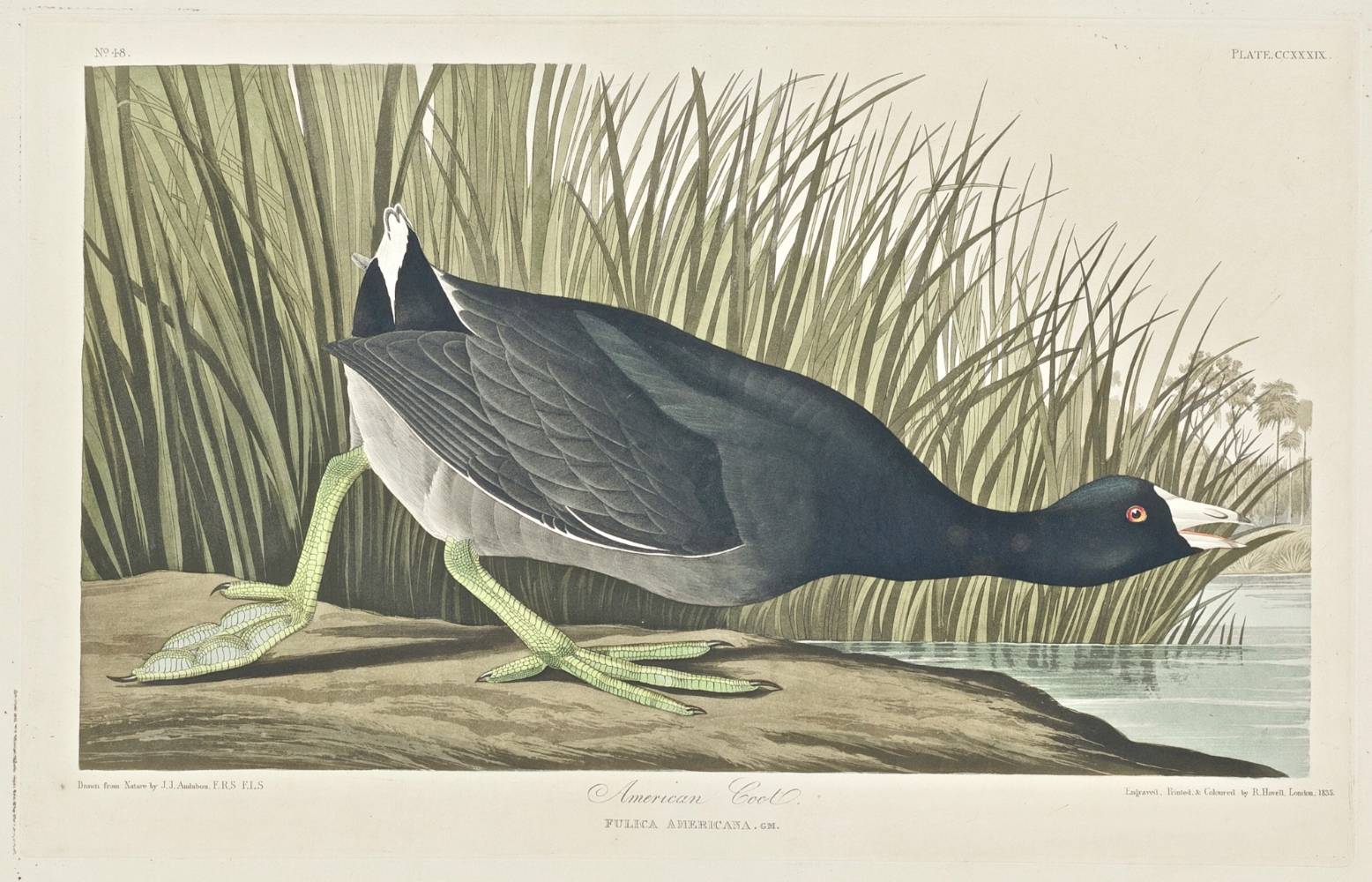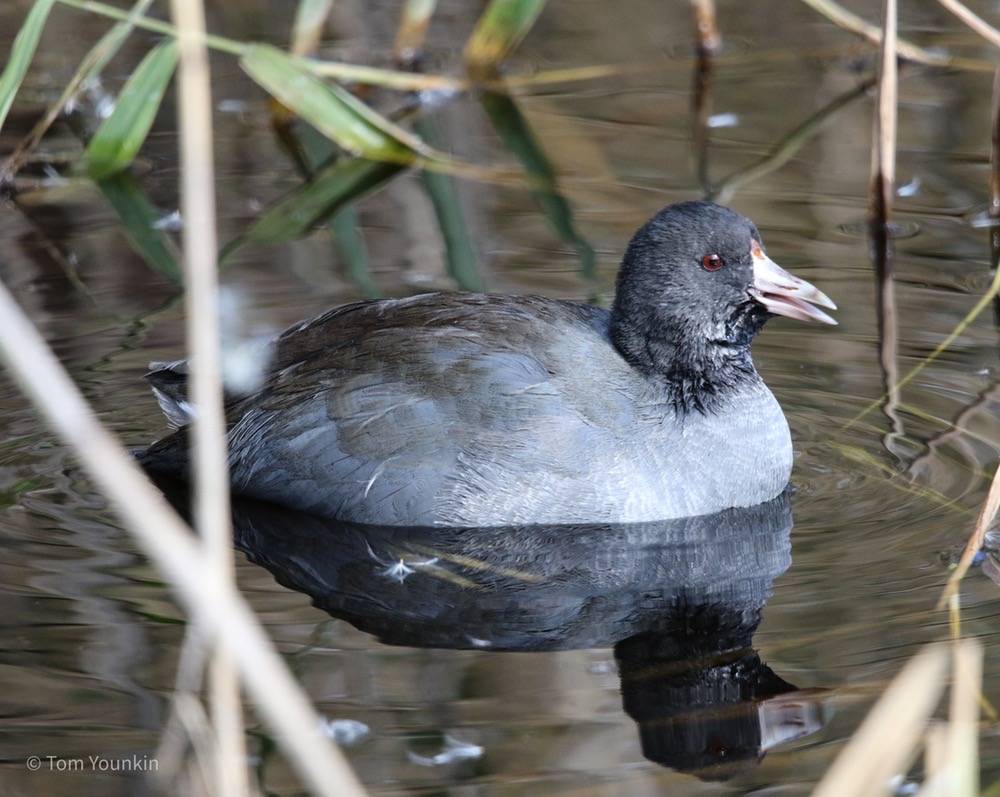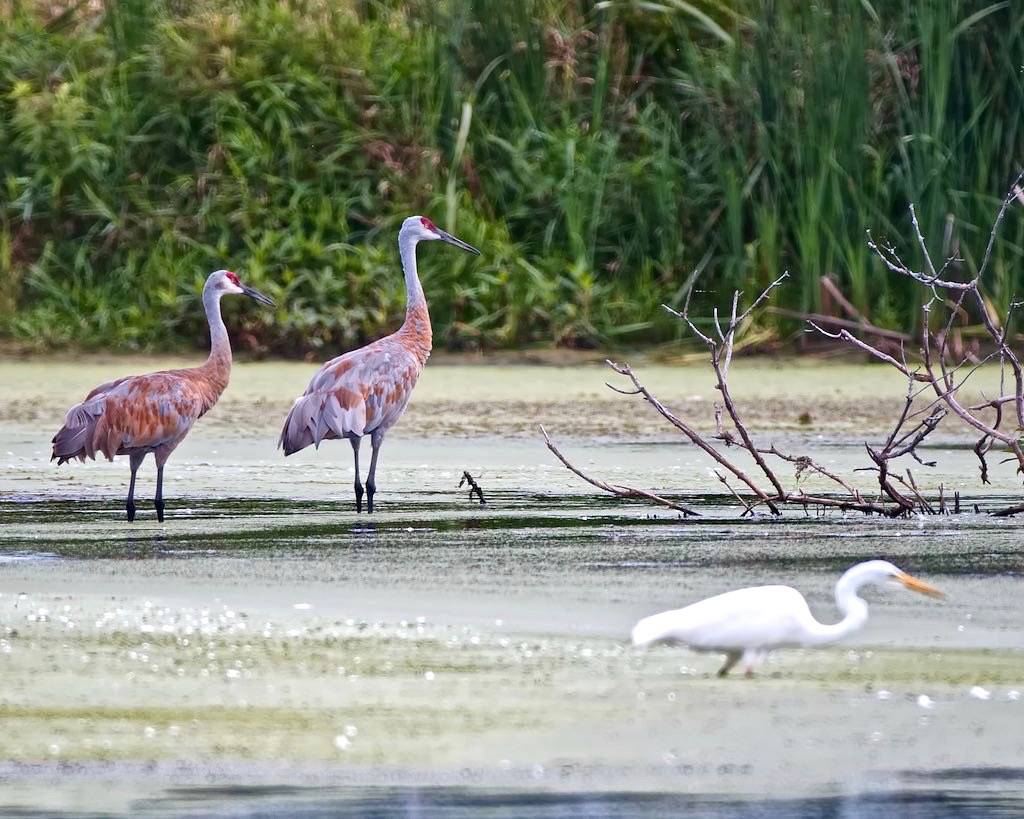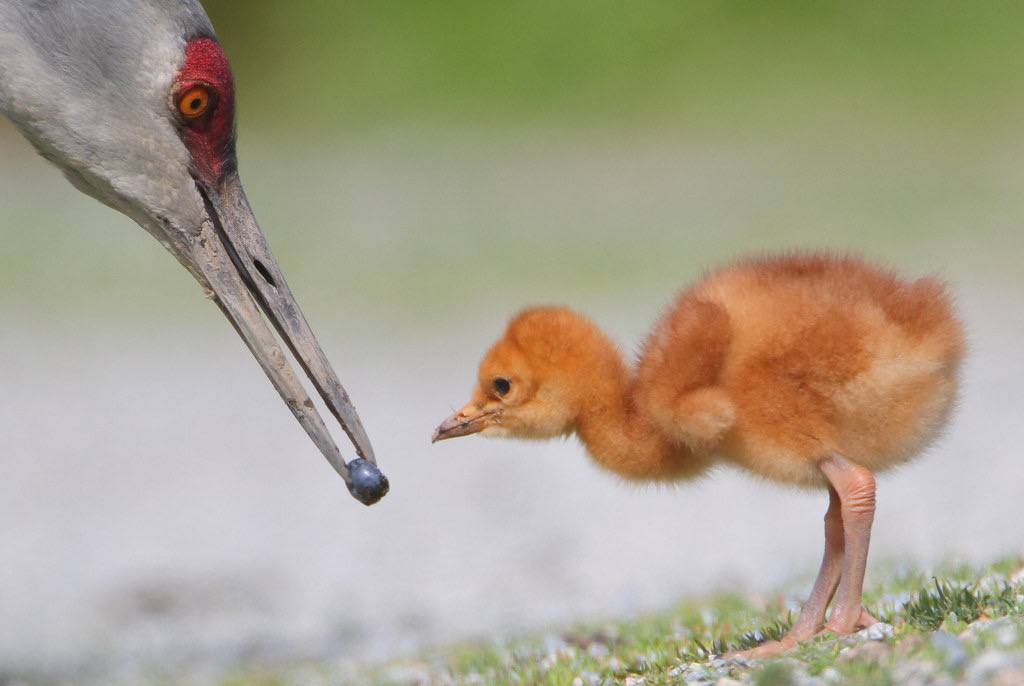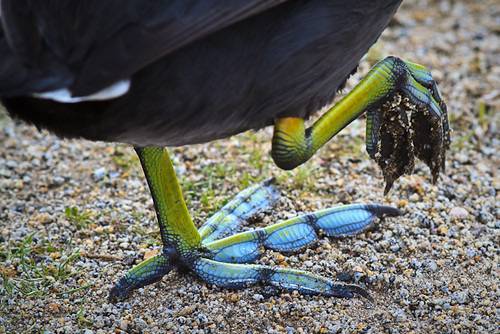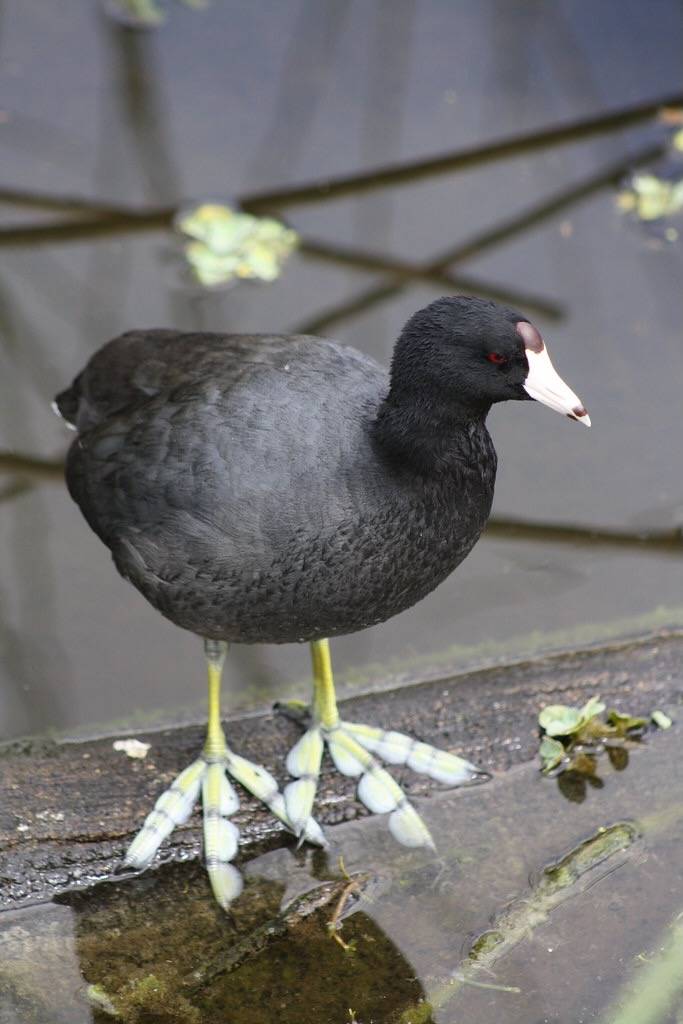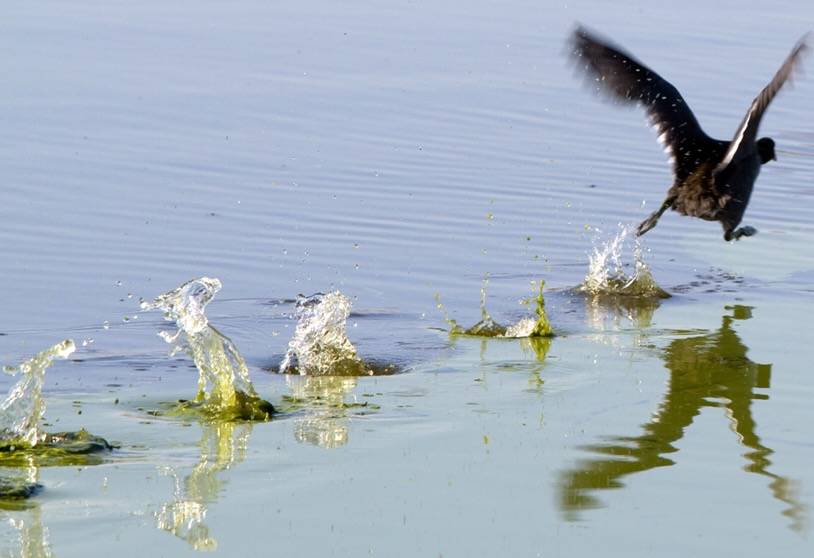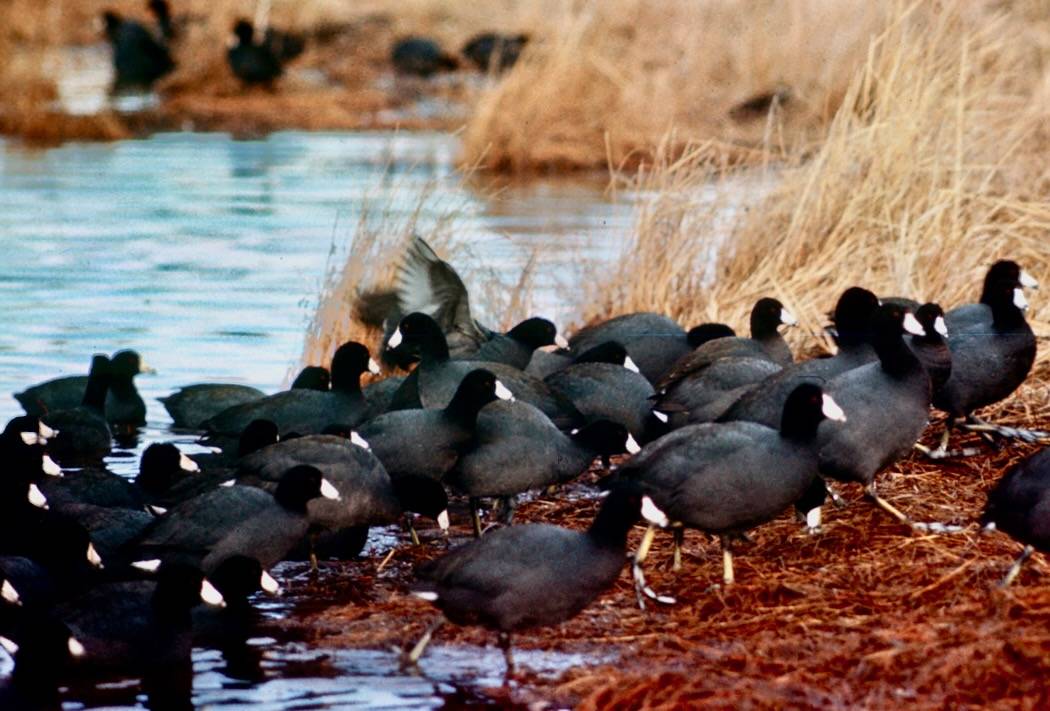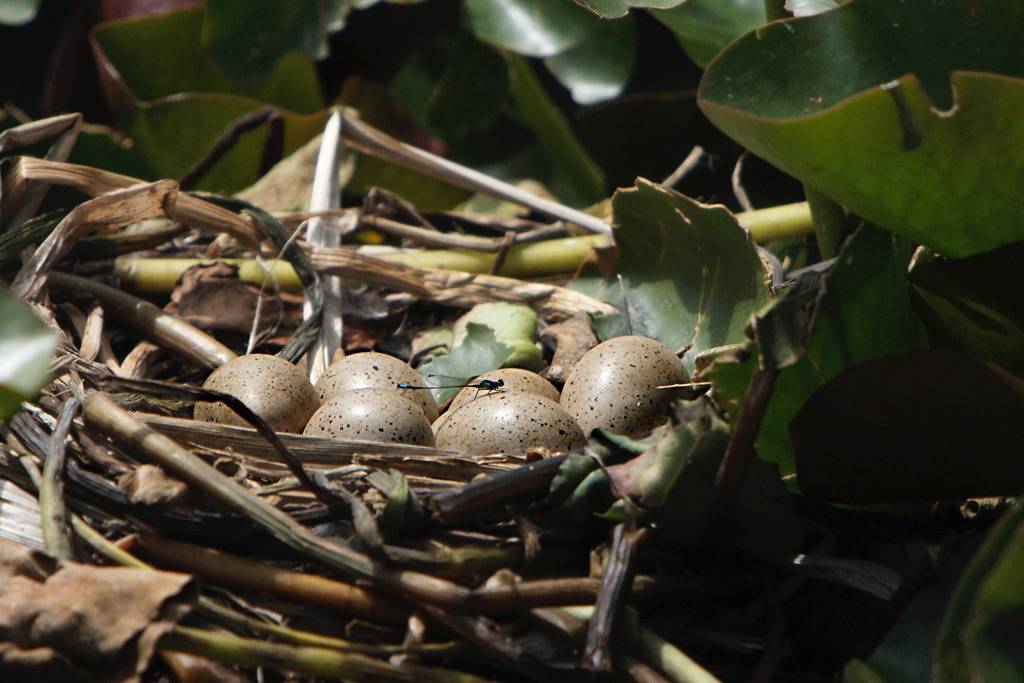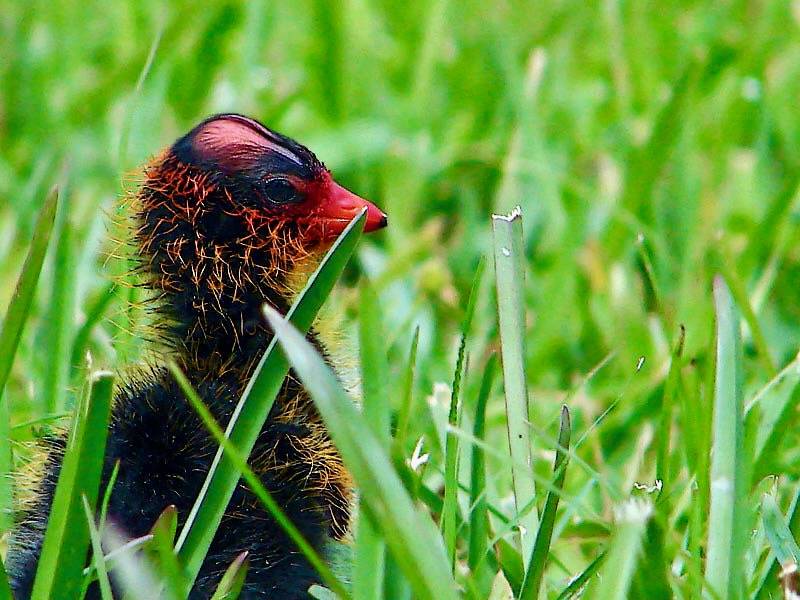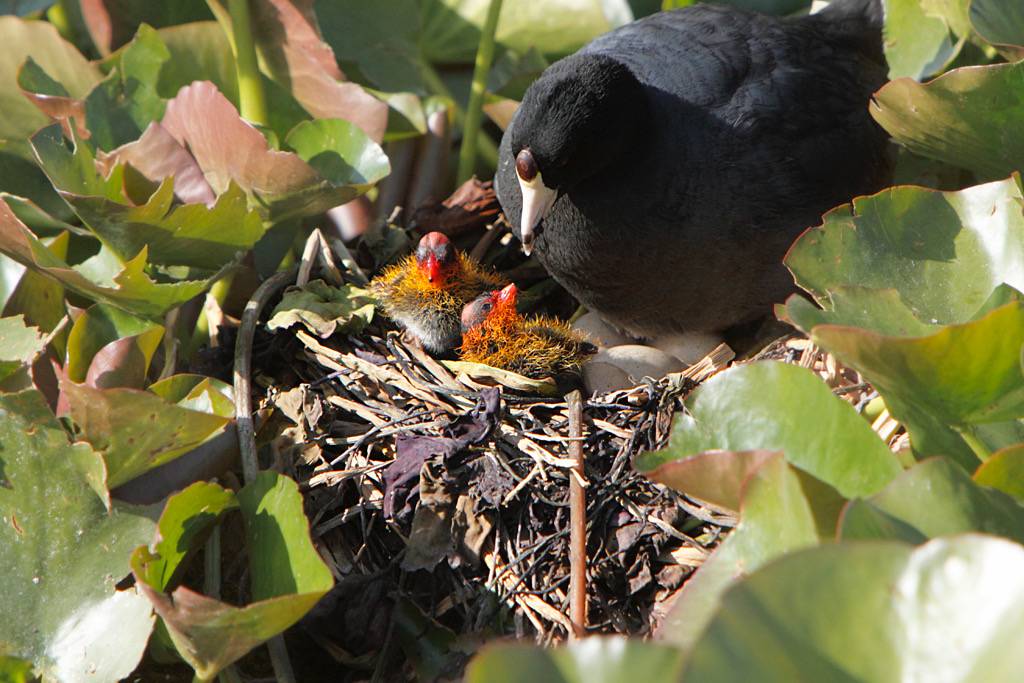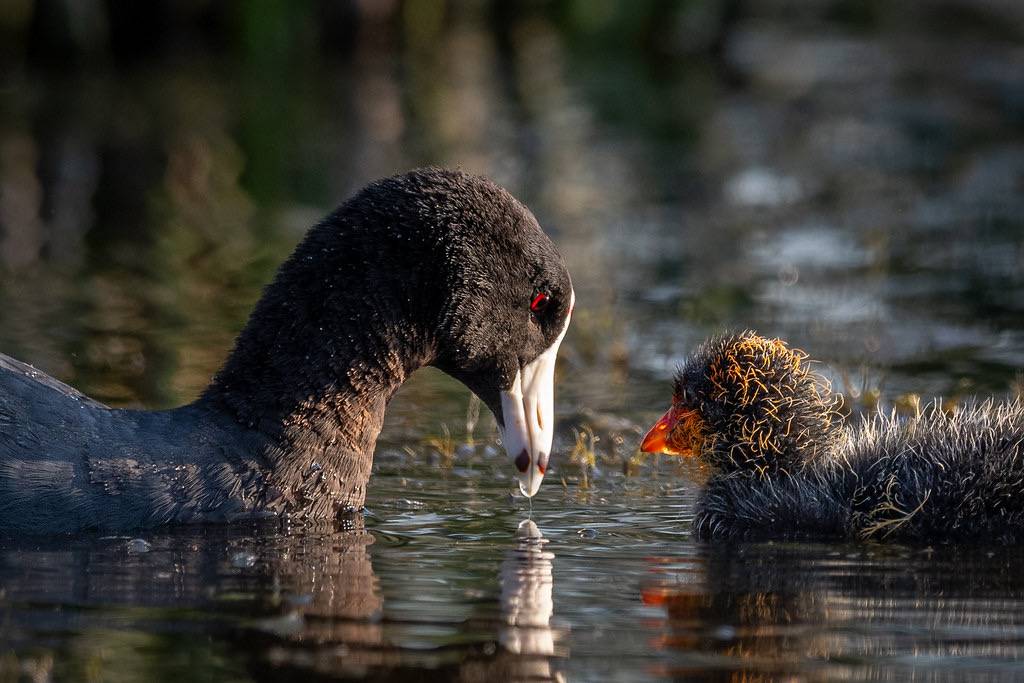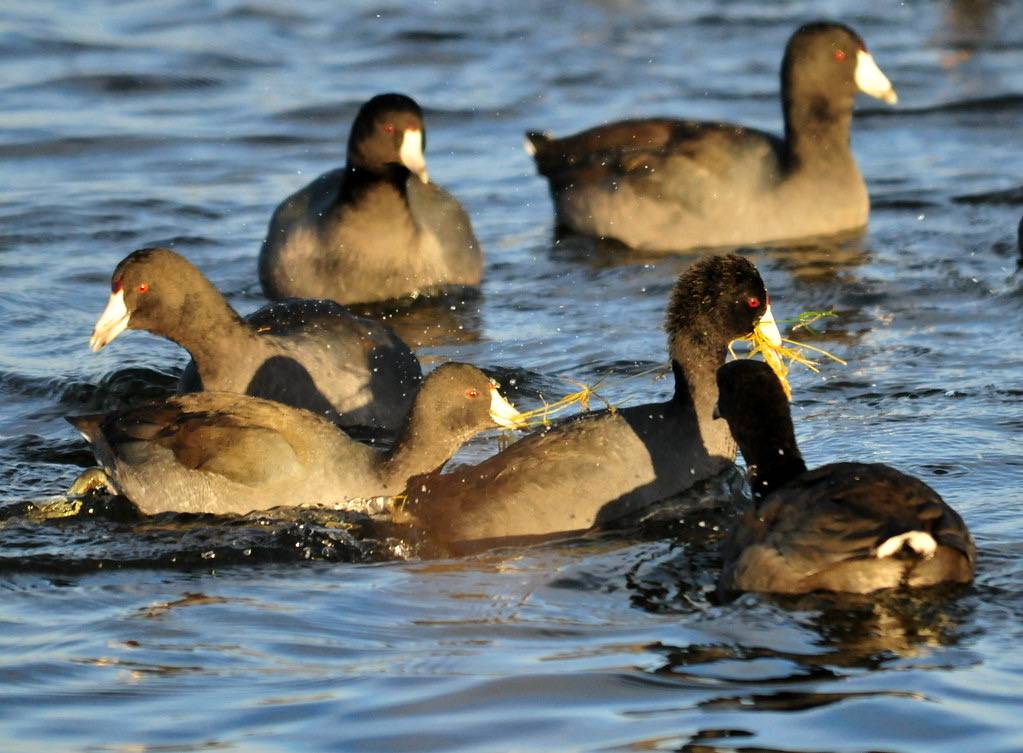American Coot
Available records since 2006 suggest that the American Coot has been a relatively rare winter visitor at Salter Grove, mostly seen where the Pawtuxet River empties into the northern end of North Cove. However, since 2022, small rafts of up to 8 birds have been seen in the southern portion of North Cove, near the causeway and boat launch.
It forages in shallow water by upending its body to dabble for algae and other aquatic vegetation. Snails, worms, and small crustaceans like crayfish and prawns are also consumed. It often feeds on aquatic vegetation brought to the surface by other dabbling waterfowl. They have been seen feeding on algae like sea lettuce along with Mute Swans north of the causeway.
The American Coot is not a duck but rather, is more closely related to the long-legged and much larger Sandhill Crane. This relationship is not evident from the appearance of adults but is suggested by the orange Sandhill Crane chick which resembles a miniature adult coot in profile.
Whereas ducks have webbed feet, the American Coot has lobed feet which consists of large collapsible flaps along their toes. This arrangement allows for easy walking on muddy substrate. Moreover, studies suggest that the lobes are effective in dissipating heat rapidly from the body.
The coot's jerky head-bobbing movements while swimming, in combination with the charcoal gray body and soewhat pointy white bill sets it apart from ducks even at a distance.
In stark contrast to the black head of adults, the newly hatched chicks are covered by fine plumes tipped in bright orange. Studies have shown that parents will lavish more attention on chicks that are more highly ornamented. In most other bird species, chicks have to fight with one another for attention from parents--just being prettier would not be enough.
The American Coot occurs throughout North America in marshy habitats that border lakes, ponds and sluggish rivers. It prefers freshwater environments and is a year-round resident where water bodies remain open in winter. However, individuals that breed in the northern part of its range will migrate, sometimes in the hundreds and thousands, as far south as Panama to winter in quiet coastal habitats with abundant food.
For more information:
https://www.allaboutbirds.org/guide/American_Coot
https://www.audubon.org/field-guide/bird/american-coot
https://www.birdsbybent.com//ch1-10/coot.html
https://en.wikipedia.org/wiki/American_coot
http://www.biokids.umich.edu/critters/Fulica_americana/
https://web.stanford.edu/group/stanfordbirds/text/essays/American_Coots.html

